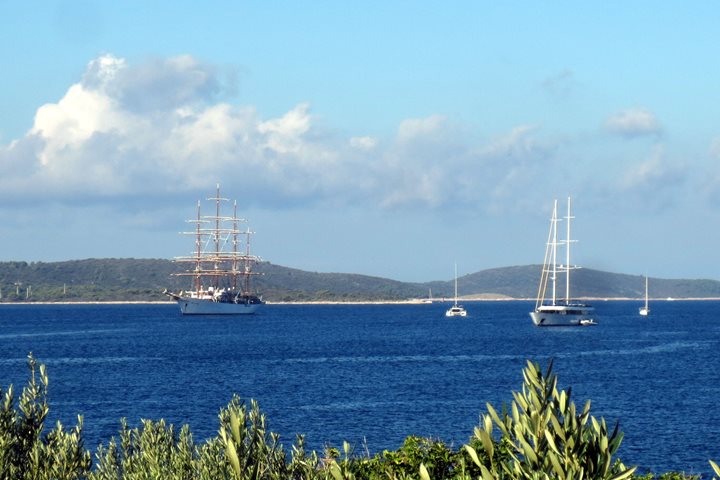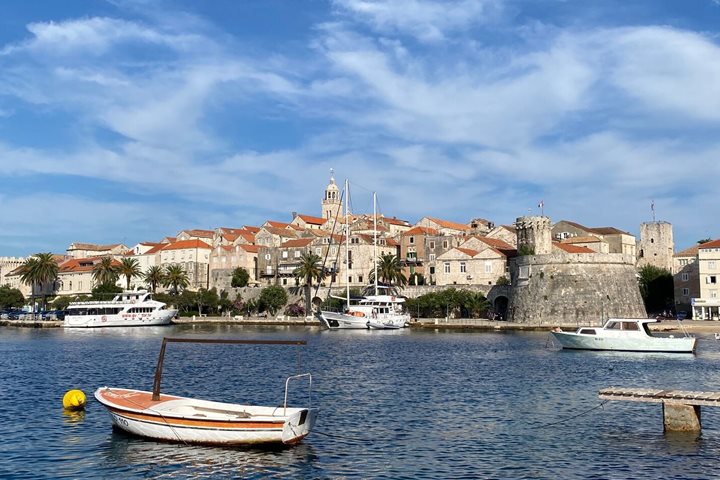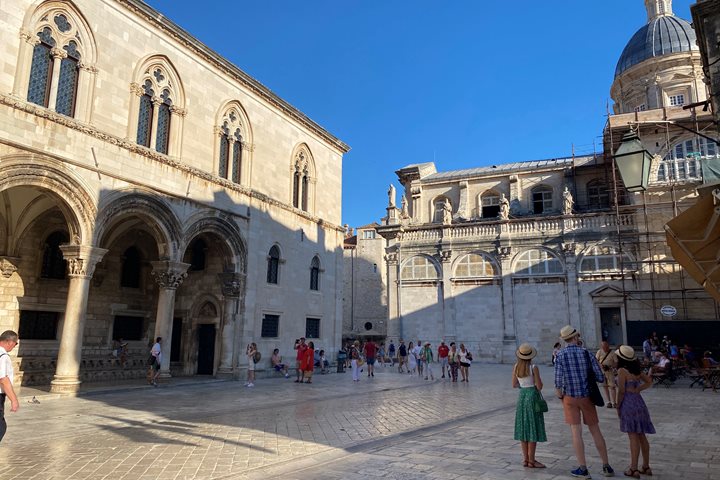For our last full day aboard the Sea Cloud we sailed through some of the hundreds of islands located off the coast of Croatia. We headed for Hvar, an island which has been inhabited for around three thousand years; Indigenous Illyrians, Greek colonists, and the later Roman Empire have all left their mark on the landscape. Eventually Slavic peoples migrated into the area, and later still Italian merchants left a lasting imprint on the local culture, most evident in its architecture and cuisine.
Hvar’s elongated topography is typical of this region; it is forty miles long but averages just two miles wide. It is separated from the mainland and neighboring islands by narrow straits. Rugged limestone formations rise from the seabed, capped by clusters of trees and shrubs. While this fragmented landscape presents numerous sheltered harbors, it also provides cover for more nefarious operators — the Dalmatian Coast was plagued by pirates for centuries.
After tendering to shore, we took a walking tour of old Hvar. The town is built from locally sourced limestone, its pavements polished smooth by generations of pedestrian traffic. In the 13th century Hvar became part of the Venetian Stato da Mar, having requested their protection. Venetian rule brought with it substantial urban development, including the hilltop fortress, city walls, and the Arsenal. The Franciscan monastery is another institution of this era, providing shelter, provisions, and medical aid for the Venetian galleys that passed through.
After returning to the ship, we set course for our destination in Dubrovnik. In the afternoon our cultural specialist Zrinka Sapro talked us through the sometime complicated history of the Balkans, from ancient times to the 20th century. As the day drew to an end, we gathered once more at the lido bar for Farewell Cocktail Hour, the guest slideshow, and the Captain’s Farewell Dinner.







